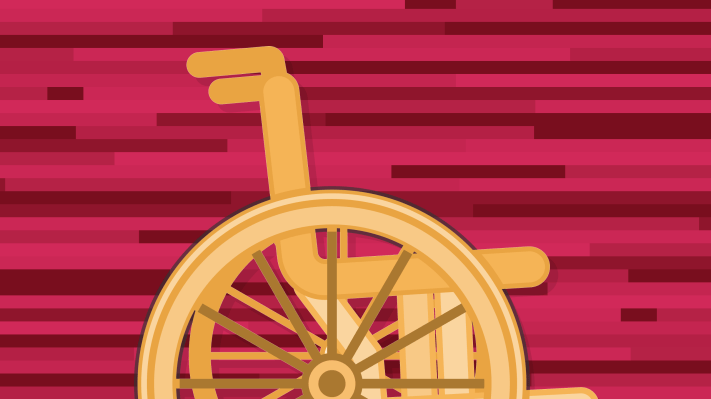Rohan Silva is obsessed with social mobility and why certain groups are so under-represented in the technology industry.
He co-founded Second Home, a coworking space looking to bring together disparate civic-minded, cultural, creative and commercial entrepreneurs at sites in Lisbon, London and (now) Los Angeles, and he has spent years examining how gender, race and class impact access to technology as a now-reformed politician. Throughout that work though, one area that he says he overlooked was accessibility and entrepreneurship focused on people with disabilities.
“At Second Home, we pride ourselves on having a diverse community. I can count on one hand the number of founders with disabilities we have in our community, so there is definitely something going profoundly wrong,” Silva says.
Enlisting the help of the European venture capital fund Atomico, Silva has set up a micro-investment fund of £100,000 to tackle the problem.
“It’s a large amount compared to what I have and a small amount compared to most venture capital funds,” he explains. “The much bigger prize here is the ability to fund technologies that have the opportunities to improve the lives of people with disabilities.”
Silva isn’t alone. Organizations like Not Impossible Labs, a Los Angeles-based company, and startups like OrCam Technologies, eSight, B-Temia, Kinova Robotics, Open Bionics, Voiceitt and Whill are harnessing technology to bring solutions to people with disabilities across the world.

Rohan Silva is the co-founder of Second Home, and was previously Senior Policy Adviser to the British Prime Minister, where he developed some of the UK’s key enterprise policies, such as the Seed EIS tax break, Entrepreneur Relief and Entrepreneur Visas.
At Not Impossible, that means marshaling resources to develop technologies that help people who are blind skateboard; help people who can’t hear experience live music; and bring low cost, 3D printed prosthetics to people with amputations.
For Silva and Not Impossible founder Mick Ebeling, the need to find solutions to the challenges faced by people with disabilities is a function of their own experiences interacting with the community.
Ebeling had his epiphany while at an art show benefiting one of the early practitioners of graffiti art in Los Angeles. “We happened to choose to go to this event and by doing so it led me realizing the power of letting one human being truly affect your life in a deep and meaningful way,” Ebeling said in a marketing video promoting the work Not Impossible had done to develop a technology allowing the artist “Tempt” to communicate despite being mostly paralyzed due to amyotrophic lateral sclerosis.
Silva’s introduction to the travails that people with disabilities confront came from his interactions with a tech reporter in the UK.
“The more I looked at it the more I realized that he is absolutely right,” Silva said. “Technology has swept through industry after industry” but it hasn’t transformed assistive technologies, he said.
If investors are truly concerned with finding significant open markets within which to back entrepreneurs, assistive technologies are ripe for innovative companies.
There are 12 million people in the UK living with a disability, Silva says. The entire population of people with disabilities globally stands at 1 billion and there are 70 million potential customers for assistive technology products across Europe. If demand in human terms isn’t enough to sway would-be entrepreneurs, then perhaps a recent market report indicating that spending on assistive technologies for the elderly and people with disabilities is projected to reach over $26 billion by 2024 will do the trick.
“It’s a big market, and yet, basically very few startups are being founded in that area and very little money is being invested,” Silva says. “It’s a vicious cycle downward. If [entrepreneurs] know venture capitalists aren’t interested and they can’t really raise money in that area … they don’t really develop a new orthotic brace, they do another photo-sharing app.”
While Silva and Atomico mean well, it’s unclear how much his micro-investment fund can move the needle. It’s something that the entrepreneur recognizes himself, but hopes that the pre-seed investment he can provide will at least do something to generate more ideas and move the needle.
“I’m only going to allocate to one or two companies,” Silva says. “But the great thing about Atomico being involved is that they’re a top tier VC fund … [with their help] I’m really confident that it won’t be just 100K, it will be more.”
Atomico will commit its internal resources to support the projects that Silva backs, he says. That means that even though the amount of capital that he invests may not be more than runway for a few months, the backend support, advisory services, and network that Atomico provides could be invaluable to an early-stage startup.
While Silva is likely correct that more attention needs to be paid to the assistive technology market, it’s unfair to say that no investor is backing companies in this area. Driven by the needs of its aging population, Japanese technology companies and investors have backed a number of assistive technologies, including Whill, which has raised nearly $90 million in financing. In Israel, OrCam Technologies has amassed $86.4 million to develop technologies that can help overcome challenges associated with blindness. Finally, in Quebec, Kinova Robotics has raised $25 million for its assistive technologies for people with limited mobility.
“One of the criticisms of the technology world is that you’re only really focused on ‘First World,’ narrow problems that guys in Silicon Valley are concerned about. If you look at the neglect of disabled people by tech innovation you say, ‘You know what? That’s a fair criticism,'” says Silva. “This is where tech can pull itself out of the mire … There could be a child who can see because of new visual aids and someone who could hear from new hearing aids.”
